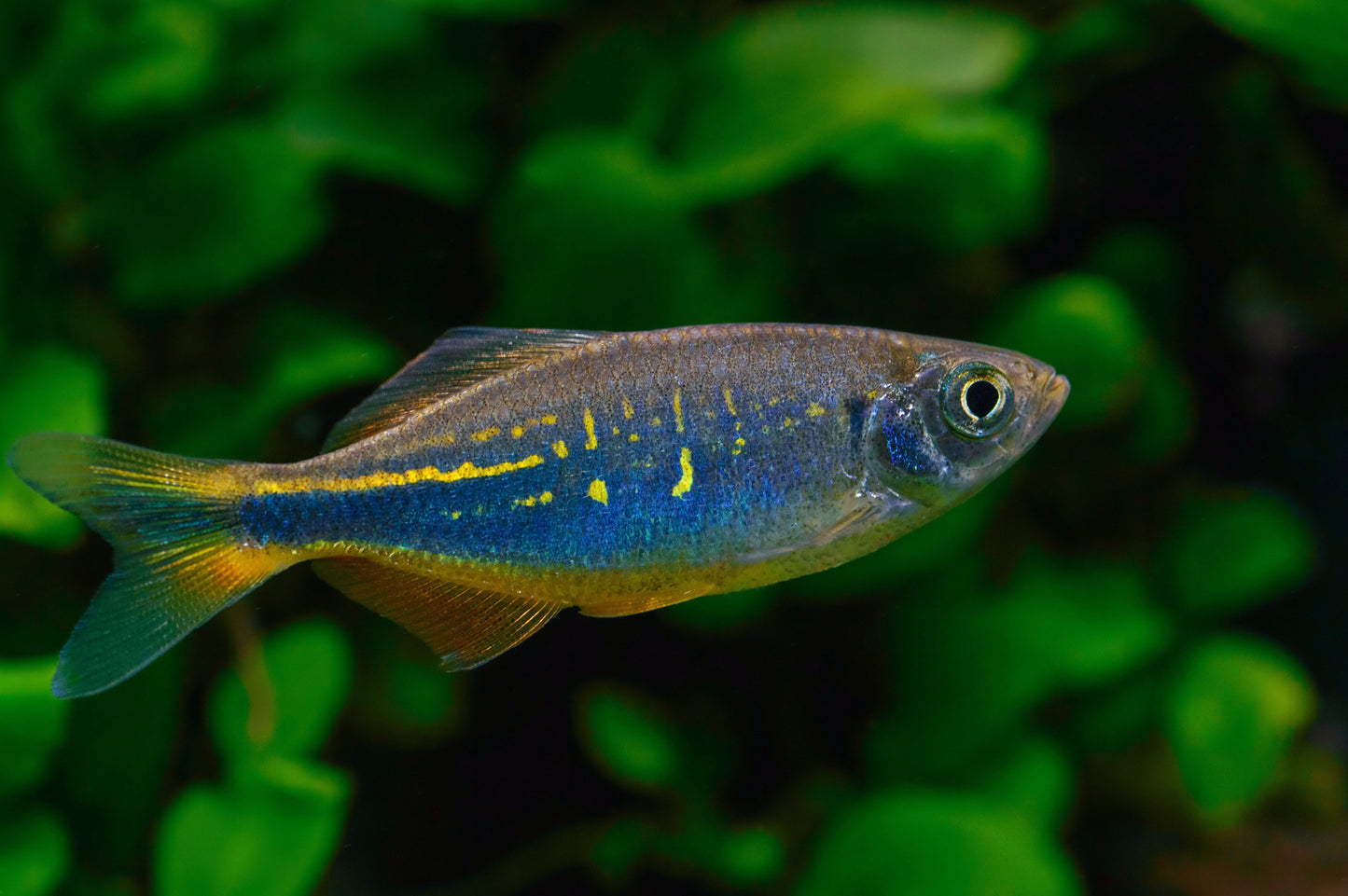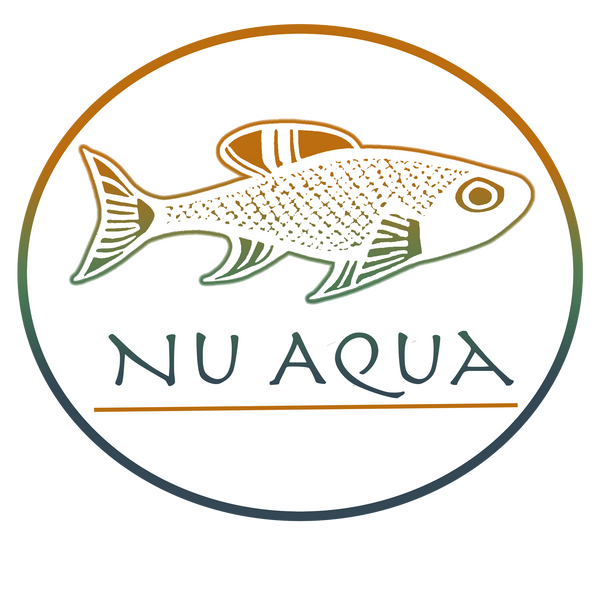Malabar Danio
$5.49 USD
Regular price
$5.49 USD
Sale price
$5.49 USD
Regular price
Unit price
/
per
Couldn't load pickup availability
Shop safely
Secure your shopping experience with various safe and trusted payment methods.
Payment methods
Sold out
The Malabar Danio, scientifically known as Devario malabaricus, is a large, active danio species native to fast-flowing streams and rivers of the Western Ghats in southern India and Sri Lanka. Sometimes called the Malabar Giant Danio, it is prized in the aquarium hobby for its bold coloration, lively schooling behavior, and suitability for larger, riverine setups.
Adult Malabar Danios typically reach about 4 to 5 inches (10 to 13 cm) in length. They have an elongated, torpedo-shaped body with a metallic blue or greenish sheen and several horizontal gold or yellow stripes running from the gill cover to the tail. The fins are mostly clear to yellowish and the body shows bright flashes under strong lighting, especially in well-conditioned, healthy fish.
A tank of at least 55 gallons is recommended for a group, as Malabar Danios are fast, strong swimmers that require abundant open space. Keep them in groups of six or more to encourage natural schooling behavior, reduce aggression, and bring out their best colors. The aquarium should have a soft sand or smooth gravel substrate, scattered rocks and driftwood, and dense plantings along the edges to provide resting spots and mimic their native habitat. Strong water flow and good surface agitation are appreciated.
Water parameters for the Malabar Danio should include a temperature range of 72 to 78°F (22 to 26°C), a pH between 6.5 and 7.5, and soft to moderately hard water. This species is hardy but thrives in clean, well-oxygenated water with regular partial changes.
Feeding Devario malabaricus is straightforward, as they are omnivorous and will accept high-quality flakes or pellets as a staple, along with live or frozen foods such as bloodworms, brine shrimp, and daphnia. Occasional feedings of vegetable matter, like blanched spinach or zucchini, will help ensure optimal health and color.
Malabar Danios are peaceful but very active and do well with other robust, fast-moving tankmates such as large barbs, rainbowfish, loaches, and peaceful cichlids. Avoid keeping them with slow-moving or long-finned fish that may be outcompeted for food.
Breeding Malabar Danios in captivity is possible. They are egg scatterers and show no parental care. To breed them, set up a separate tank with fine-leaved plants or spawning mops, and remove adults after spawning to prevent egg predation. Fry can be raised on infusoria or powdered foods before transitioning to baby brine shrimp.
Devario malabaricus (Malabar Danio) is a hardy, energetic schooling fish that adds color and constant motion to large community or river-themed aquariums.

Shopping Safely
At our Shopify store, we prioritize your safety and security. Here's how we ensure a secure shopping experience:
1. Secure Transactions: We use advanced encryption to protect your personal and payment information, ensuring it is safely transmitted and safeguarded.
2. Trusted Payment Gateways: Our store integrates with trusted payment gateways, ensuring your transactions are processed securely and efficiently.
3. Data Privacy: Your privacy is our top priority. We follow strict data protection policies to keep your personal information confidential and secure.
4. Secure Platform: Shopify provides robust security features and continuous monitoring against vulnerabilities, ensuring a safe shopping environment.
5. Verified Merchants: We are a verified merchant on Shopify, committed to providing authentic and high-quality products.
6. Transparent Policies: Our clear return, refund, and shipping policies provide peace of mind, knowing we stand behind our products.
7. Customer Support: Our dedicated customer support team is ready to assist with any concerns or questions you may have.
Shop confidently at our Shopify store, where your safety and satisfaction are our top priorities.
Questions about this product?
Don't be a stranger.
Selling fast!
Get yours while you can.
-
WELL TRUSTEDOver 100k customers
-
SUPER FASTWith Express delivery
-
EXPERT HELPSeven days a week
-
BEST PRICESUnbeatable value

